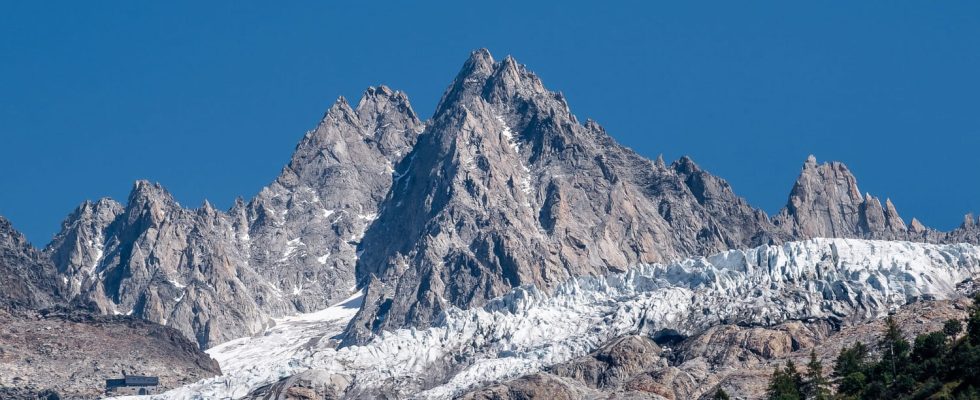The summit of Mont Blanc has lost two meters in height according to the latest official measurement revealed on Thursday October 5. How can this downward trend observed for several years be explained?
The roof of Europe no longer rises to 4,810 meters. In recent years the Mont Blanc has lost a few meters according to the most recent measurements including those dated September 2023 and revealed this Thursday, October 5. The Alpine mountain is today 4,805.59 meters high, so it has fallen by 2.22 meters in two years, indicate the expert surveyors from Haute-Savoie responsible for the measurements.
The height of Mont Blanc has been measured every two years since 2001 and to know the exact size of the European giant, surveyors have no choice but to climb the Alpine mountain. On each expedition, around twenty altitude experts take measurements over several days at the summit of Mont Blanc. In 2021, the roof of the Alps peaked at 4,807.81 meters, it was already one meter less compared to the previous readings of 2017, those of 2019 having remained secret because they were considered abnormally low and not very representative.
The new official measurement from Haute-Savoie surveyors therefore confirms that Mont Blanc is sinking over the years. A trend observed since 2007, a record year when the summit of the mountain peaked at 4,810.90 meters. But experts are not worried about these measures. The size of Mont Blanc only varies by a few meters per two years and these variations are partly due to weather conditions, in particular the rainfall which was quite low during the summer of 2023. These measurements therefore do not assume a continuous and irreversible decline. “Mont Blanc could very well be much higher in two years” when the next measurement is taken, said Jean des Garets, president of the Haute-Savoie departmental chamber of surveyors during a press point in Chamonix. The mountain has already gained several meters in height in the past, such as between 2003 and 2007, going from 4,808 to 4,810 meters.
The decline of Mont-Blanc symptomatic of global warming?
Since 2001 and the start of measurements of Mont Blanc, the altitude of the summit of the mountain has fluctuated and the surveyors explain it: the rocky peak of the Alpine summit culminates at 4,792 meters. The few remaining meters depend on the thickness of the layer of “eternal snow” which forms a snowdrift and varies “according to altitude winds and precipitation”. The altitude of Mont Blanc therefore changes throughout the seasons and the summit is always higher at the end of summer than during winter or spring when the wind removes the last meters of snow.
The expert surveyors of Haute-Savoie, including Denis Borel, had already called in 2021 not to “draw hasty conclusions on measurements which have only been carried out since 2001” on the altitude of Mont Blanc. They leave it to climatologists to assess the consequences of global warming on the altitude of the roof of the Alps. It is up to the latter to “put forward all the hypotheses to explain this phenomenon”. Because, unfortunately, climate change has shown its first effects on European glaciers, which are more vulnerable to rising temperatures due to their low altitude. In 2022, the glaciers of the French Alps notably lost 5 to 7% of the remaining glacial mass according to specialists; the melting of the ice was then judged “exceptional”.
